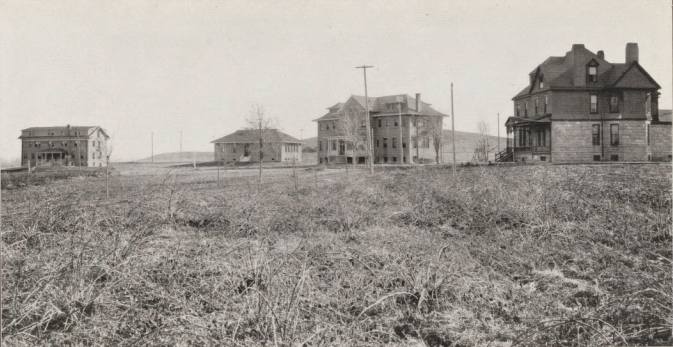
At the turn of the century, Denver’s newly founded juvenile court was faced with a novel issue. The state had been operating a number of state industrial schools since early statehood, but the facilities operated as a catch-all solution that also aided homeless and impoverished children while doubling as a juvenile detention facility. Funding, operational and organizational issues plagued both the courts and the facilities for roughly a century.
Following Judge Ben Lindsey’s advocacy efforts to start a juvenile justice system in the early 1900s, children who were sentenced to harsher punishments may have been sent to state schools that doubled as reformatories. But the schools often housed young women as well. Around that time, women between the ages of 18 and 21 could be committed to those facilities for rebellious behavior or disobedience.
The schools had a number of small riots within the first two decades after Colorado’s statehood. Local news coverage from the Colorado Daily Chieftain reported on an 1897 riot by calling the incident a “mutiny” and dubbing it “Female Furies.”
Another riot happened in 1905 at what was then known as the State Home and Industrial School for Girls. A biennial report to the governor for the 1905-06 school years attributed many of the issues with organization and management to lack of state funding. “The eleven years the School has been in existence have been troublous ones, and the fault does not lie with the Board of Control nor with the Superintendents, but it lies with the State, which has never supported this School,” the report said.
“It is a State institution and as such is entitled to the support of the State, together with the other State institutions,” the report noted. “But not a penny has the State appropriated toward its maintenance during these years, the counties paying fifty cents per day for each girl placed there by them. As this revenue is totally inadequate to the proper management of such a School, and as the financial condition of the School is constantly growing worse, it will be utterly impossible to conduct the School any longer, unless the coming Legislature will make adequate provision for its maintenance.”
In addition to funding woes, the catch-all nature of the schools was already causing management problems. The 1905 report pointed out “The aim of the Board of Control and Superintendent is to make this an industrial training school, not a penal institution. These girls are wards of the State, who require special training to fit them for good citizenship, and it is the State’s province to see that they are so fitted.”
While the schools doubled as juvenile detention facilities for some time, the funding issues continued to plague operators. Roughly 30 years later, a biennial report from the school called more attention to the lack of state funding. “The school is crowded, in that we are forced to place more students in the larger rooms than those rooms were intended to accommodate,” the report said. “For many years our appropriation has been so small that it has been physically impossible to maintain and operate one cottage. Under the present and past appropriations we may only use this one cottage during the summer.”
Roughly 100 years later, Colorado ordered a privately run juvenile corrections facility to close after an investigation from state authorities revealed “evidence of sexual and physical abuse and a spate of management problems,” according to an April 1998 Washington Post article.
The state currently operates roughly 15 “secure youth centers that serve youth between the ages of 10-21 who are pre-adjudicated or committed,” according to the Colorado Department of Human Services website.

